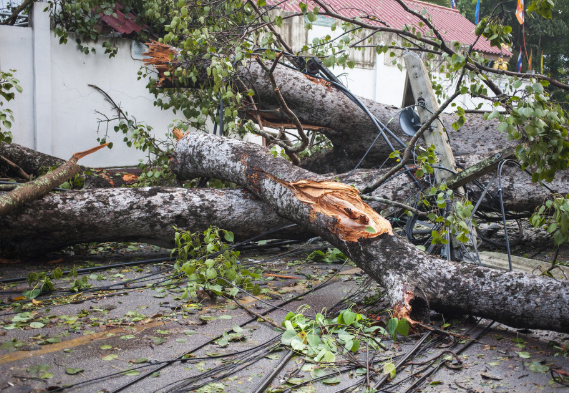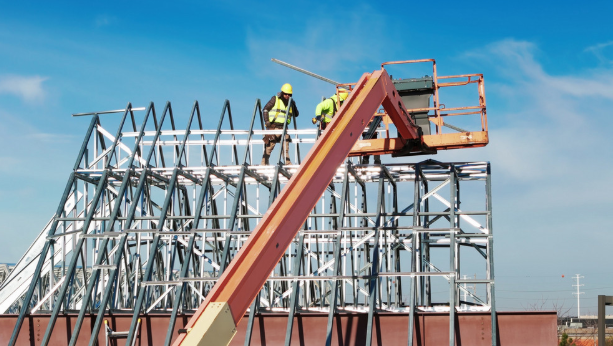Experiencing a major storm can be devastating, especially when it impacts your home. From hurricanes to severe thunderstorms, these natural events can leave a trail of destruction in their wake, affecting both the structure and the well-being of those living in it. This guide aims to provide comprehensive steps for restoring and repairing your home after such an event.
Assessing the Damage
Once the storm has passed, the first step is to assess the damage to your home. It’s essential to check for visible signs of damage externally and internally to understand the scope of work required. Begin with a thorough inspection of roofs, windows, and walls for any signs of breaks or leaks.
While evaluating the damage, be sure to document everything. Photographs and detailed notes of the affected areas will support any future insurance claims. Keep in mind that most homeowners have insurance, as statistics show that approximately 93% of homeowners are covered. This insurance can provide financial support for repairs.
Being cautious during your initial assessment is crucial, as there may be hidden dangers such as unstable structures or exposed wires. Wear appropriate safety gear and avoid taking unnecessary risks. If the damage seems extensive, it might be wise to hire a professional to perform a detailed damage assessment safely.
Prioritizing Repairs
Once you’ve assessed the damage, the next step is to prioritize repairs based on urgency and importance. Immediate risks to safety and home integrity should be managed first, such as fixing leaks or broken windows. Addressing these issues quickly can prevent further damage and expense.
Creating a prioritized list can help manage resources effectively. Consider the longevity of certain home features; for instance, roofing shingles have a lifespan between 15 and 30 years, as per industry sources. Determining the age and condition of such elements can help decide whether a simple repair or a complete replacement is necessary.
Contacting a professional can also expedite the repair process. Licensed contractors can provide quality repairs and often have insights into what requires urgent attention. Their expertise ensures that your home not only becomes livable but also resilient to future weather-related incidents.
Dealing With Insurance
Navigating insurance claims can be challenging, but it is a necessary part of the recovery process. Start by contacting your insurance provider as soon as possible to initiate your claim. The more detailed your documentation is, the smoother this process will be.
Understanding your policy specifics is essential. Some homeowners may not fully realize what their insurance covers until they face a claim. On average, a typical hurricane season consists of 14 named storms, which underlines the importance of having comprehensive coverage tailored to your region.
Working closely with your insurance adjuster will ensure a fair settlement. Prepare to provide additional documentation or clarify details as needed. This collaboration can significantly streamline the claims process, ensuring adequate support for necessary repairs and restorations to your home.
Restoration and Reconstruction
After planning and insurance considerations, the next stage is the actual restoration process. Depending on the extent of the damage, this can range from minor repairs to complete reconstructions. Using quality materials and paying attention to building codes is vital for the long-term safety of your home.
Engaging the services of a reliable construction company ensures that all repairs conform to the necessary standards. Skilled professionals can also offer advice on improving the previous conditions, implementing storm-resistant features that could safeguard against future incidents. This foresight increases your home’s resilience.
During reconstruction, take the opportunity to update or upgrade home elements. Consider energy-efficient installations or adaptive designs that cater to changing environmental conditions. Such enhancements not only restore your home but also improve its function and sustainability in the long run.
Emotional and Mental Recovery
Dealing with a storm’s aftermath isn’t just about physical repairs; emotional and mental recovery are equally crucial. It’s natural to feel stress and anxiety after such an experience. Reaching out to a support network of friends and family can be incredibly comforting during this time.
Participating in community recovery programs can also be beneficial. Engaging with others who have faced similar experiences creates a sense of shared recovery and strength. Moreover, these networks often provide resources and workshops on resilience building and stress management.
Lastly, don’t hesitate to seek professional counseling if needed. The emotional toll of having your home damaged can be significant, and mental health professionals can offer strategies to cope with the psychological impacts. Taking steps towards emotional healing is an integral part of the complete recovery journey.
Recovering from storm damage is a multifaceted process, involving practical and emotional steps. By understanding how to assess damage, prioritize repairs, navigate insurance, and engage in reconstruction, you can effectively restore your home. While the journey may be challenging, it presents an opportunity not just to rebuild but to enhance your home for better peace of mind against future storms.








